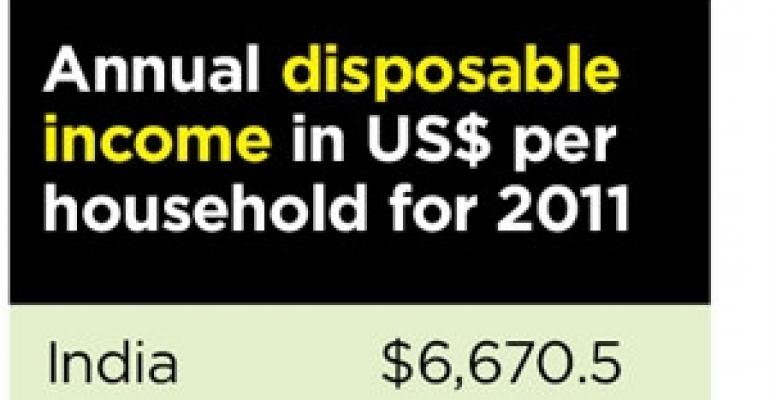The growing middle class in emerging markets ranging from Brazil to China is producing a compelling argument for international retail expansion.
These new consumers, and their appetites for products ranging from basic necessities to brand name apparel, have the potential to transform the international retail landscape. “As people have more money and they have more knowledge about what’s available on a global basis, the more they want those global brands,” says Neville Moss, director and head of EMEA Retail Research at CBRE in London.
The “middle class” now spans some 2 billion people that spend about $6.9 trillion annually. That figure is projected to rise to $20 trillion during the next decade, according to a 2010 McKinsey Quarterly Report. McKinsey defines emerging middle class consumers as those with annual incomes between $13,500 and $113,000.
Although that growing middle class is apparent in countries ranging from Afghanistan to Turkey, the short list of countries on retailers’ radar screens continue to be the BRIC countries of Brazil, China, Russia and India, as well as Mexico.

There is good reason that these countries are grabbing the spotlight. Over the past decade, these five countries have nearly doubled their world output and now account for one-fifth of global gross domestic product. Multinational corporations have been drawn to these countries to their cheap and plentiful labor supply. Such offshoring expansion is in turn elevating household incomes and consumer spending. That economic growth has created desirable target markets for retailers ranging from Walmart to Apple.
Subway, which now has more than 9,000 restaurants outside of the U.S. and Canada, counts Brazil, Russia, France, China and India among its fastest growing countries. In fact, Brazil is now the fourth largest market outside of the U.S. and Canada with 858 stores to date. “We look at a number of factors, which for us includes the penetration of QSR in the country, the degree of acceptance of franchising as a business format, supply chain availability and yes, the growth of disposable income,” says Don Fertman, Subway’s chief development officer.
In fact, the growing middle class is one of the key factors driving Subway’s new expansion in southern Africa. Subway plans to enter Kenya this year and is actively looking at expansion opportunities throughout sub-Saharan Africa.
Higher incomes attract retail
Among the BRIC nations, Brazil leads the way in its discretionary spending. The average household produces an annual disposable income of $27,476 in Brazil, followed by $20,481 in Russia, $10,332 in China and $6,671 in India, according to data from Euromonitor International.
Russia is even more attractive because the country has no consumer debt and Russians tend to spend the vast majority of their income in shops. “So, while their overall income might still be quite low, retailers can still benefit,” says Moss.
Ikea for example thought that Russia would be an ideal market for its value price point. The company opened its first store in Moscow in 2000 and now has more than a dozen stores in that country. Although it did take Ikea several years to gain a foothold and make a profit in Russia, Ikea recognized that market as a longer-term growth opportunity, Moss notes.
Even though the growing middle class in China is still a small percentage of the broader population, the country’s immense population of 1.3 billion residents gives that niche tremendous spending power.
According to research by the McKinsey Global Institute, the vast majority of household in China (82 percent) have annual disposable income between $6,000 and $16,000 ($US), which is just enough to cover basic needs. McKinsey defines the middle class or “mainstream” consumers in China as households that have between $16,000 and $34,000 in annual disposable income. Although this middle class represents a small percentage of the current population, this segment is expected to grow to encompass about 167 million households, including some 400 million people, by 2020, according to McKinsey.
Exactly what constitutes “middle class” status can be a slippery definition that varies from country to country based on incomes and cost of living. Some research sets the bar for entering the “global middle class” as low as $5,000 for annual household incomes.
Although that is well below that of developed nations, countries such as China and India pack the added punch of huge populations. “Given the size of the population, it is still a huge number of people, and that is what is attracting the retailers there,” says Moss.
Join the ICSC Retail Real Estate World Summit in Shanghai to hear more on how the burgeoning middle class in emerging markets creates opportunities for retailers and developers.

